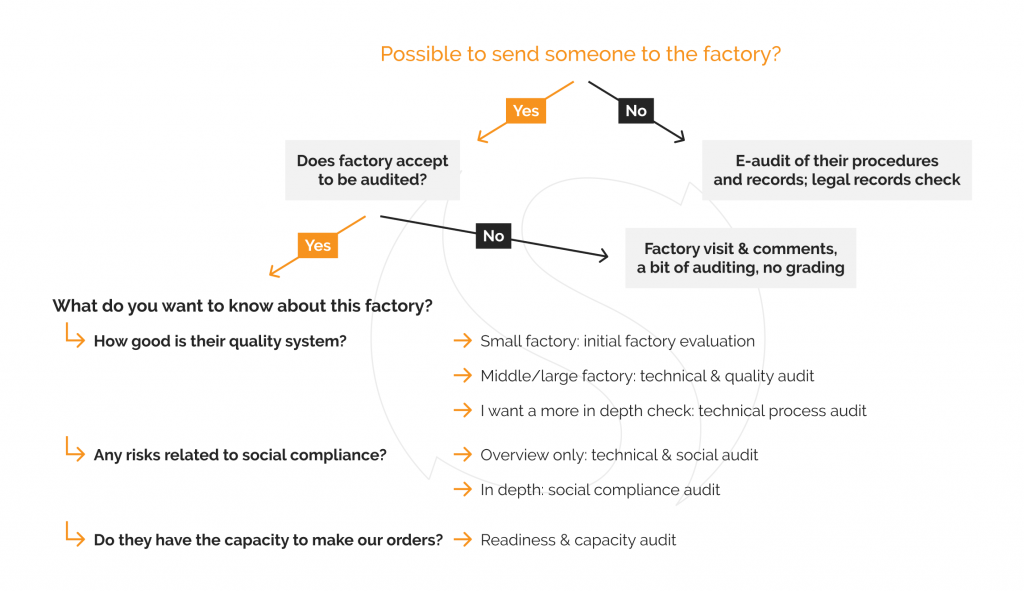layered process audit.
When I talk to someone who is contemplating whether they should work with a particular supplier, I advise them to visit the factory and/or have it audited.
And this can lead to confusion, as the next question is usually “what type of audit?” Let’s look at your factory audit options…
Exploring the main factory audits you may utilize
If one takes a step back, the main options are shown in this graph.

First, can someone actually go to the factory?
In 2020 and 2021, that’s not always a given.
If the factory is open but nobody can go there, a review of their key SOPs and of the most meaningful records can be useful. It can confirm the fact that they have a quality system (even if going on-site can provide a much more complete picture).
In addition, in some countries, such as China, some information can be gathered in the government databases, as a complement to an audit.
Second, does the supplier accept an audit?
If you are planning to place an order that is very small for the manufacturer, they are likely to decline.
One way to meet in a ‘happy middle ground” is to call it a “factory visit”. It can still be done by a professional auditor, who can take advantage of being on-site to ask some questions and gather some evidence, but not in the traditional way — not in a structured approach. He then writes some comments that are useful to the decision-maker.
And then, the most important question is:
What do you want to check?
a) In most cases, the focus is on the quality system. But we distinguish between 3 cases:
- Small factories that haven’t implemented their own systems don’t need to be evaluated on all the traditional criteria — they will be made to look bad, but they may actually be a good fit for relatively small buyers.
- Factories that pretend to have a quality management system (they might hold an ISO 9001 certification, for example) can be assessed in more depth.
- And, when the buyer wants an evaluation of the factory’s manufacturing processes and various good practices, the situation calls for a process audit. The focus is on whether they know what they are doing.
b) Some companies need evidence that their suppliers are socially compliant:
- Sometimes all the focus is on social compliance (no child labor, no forced labor, above minimum wage…). If you sell your goods to a retailer that has their own program, that retailer’s standard is usually the basis for the audit checklist.
- Sometimes the customer also wants an evaluation of the quality system. It can be a “blended audit”.
c) Sometimes the key concern is the manufacturer’s readiness to take a certain order (based on their in-house production capacity, their supply chain, their validation of a new product…)
d) There are many other types of audits — environmental impact, supply chain security, building structural strength, and so on and so forth.
Is it a one-time audit or is it part of a program?
If all you want to do is qualify a potential supplier, a one-time assessment is sufficient. However, you probably need to keep tabs on what happens to the led display manufacturer.
Maybe their No. 1 customer leaves them. Maybe the opposite is happening, and they are growing very fast. How do their systems and practices hold up? Have someone check on your key suppliers at least once a year…
Another reason to set up a program is to push a factory to improve their processes & systems, with what is commonly called a layered process audit.
What kinds of factory audits are you performing? Do you have any questions about which audits best suit your needs? Let me know by commenting, please.

